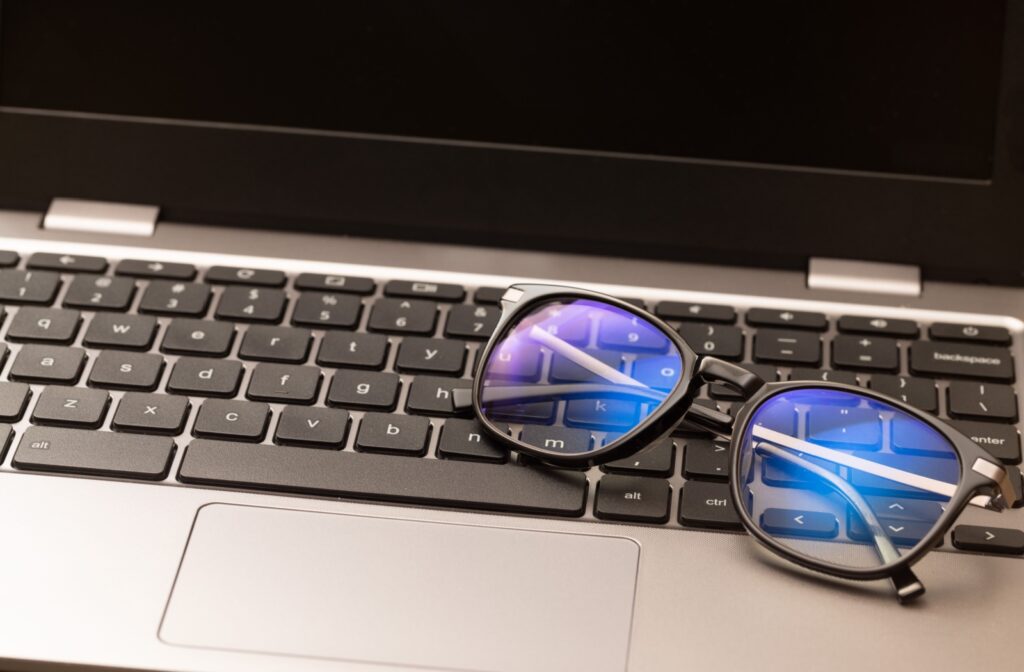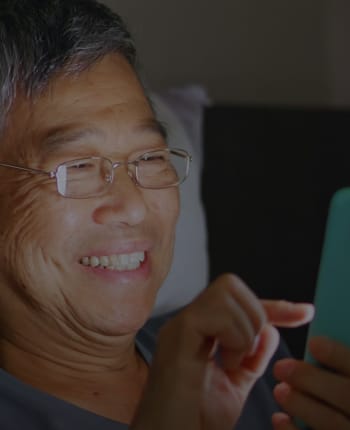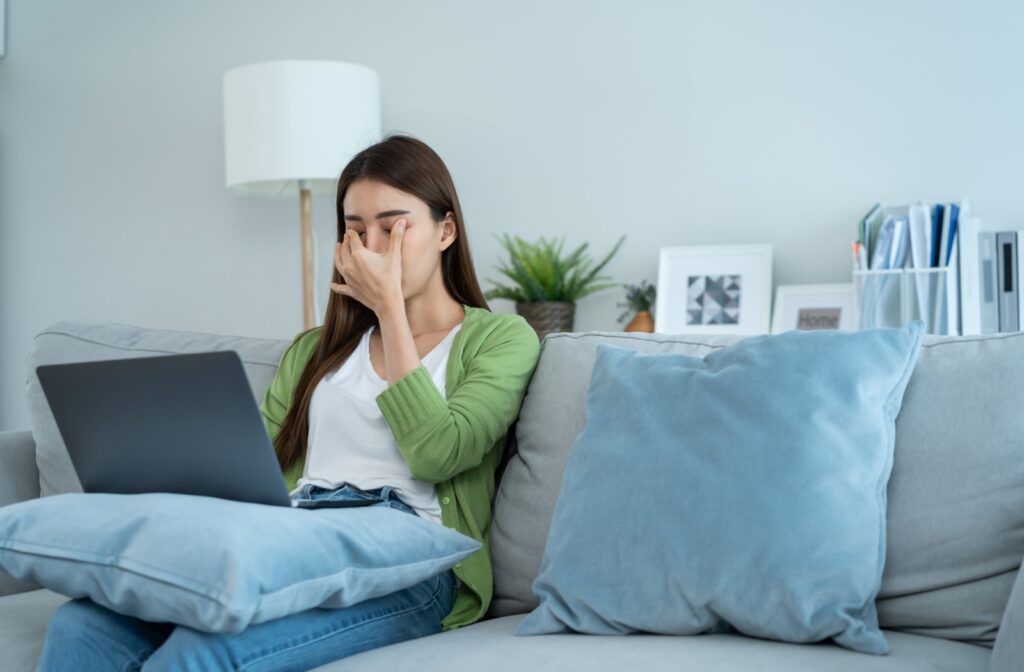Nausea and eyestrain often go hand in hand, especially in this digital age where endless screen time has become a daily norm. Have you ever felt queasy or fatigued after long hours of staring at your computer, phone, or even a good book? You’re not alone!
Nausea, dizziness, and irritated or strained eyes are symptoms that can result from digital eye strain or other underlying eye conditions like binocular vision dysfunction (BVD).
The good news? Your eye doctor can help you manage these underlying eye conditions, and minor tweaks to your daily habits can provide quick relief.
What Is Eye Strain?
Eye strain, or visual fatigue, happens when your eyes get tired of intense use, like staring at screens, reading, or driving for long periods.
It’s a common issue in today’s tech-driven world, with symptoms including blurry vision, headaches, dry eyes, and even neck or shoulder pain.
While eye strain isn’t typically serious, it can be uncomfortable and disruptive if left unchecked. The good news? Most of the time, a few small adjustments can make a big difference in keeping your eyes feeling fresh and focused.
However, seeing an eye doctor is crucial to rule out other eye conditions that cause similar symptoms, such as chronic dry eye or binocular vision dysfunction (BVD).
Can Eye Strain Cause Nausea?
Yes, nausea and eyestrain are closely connected, especially when your eyes are overworked or struggling to focus.
Spending long hours staring at a screen or reading fine print without breaks can strain your eye muscles. Strained eyes can trigger discomfort, dizziness, and even that queasy feeling we call nausea.
Eyestrain can disrupt your visual balance, confusing your brain and inner ear—like getting motion sickness. If you’ve ever experienced nausea, a headache, or blurry vision after staring at a screen, your eyes are probably telling you they need a break.
Understanding this link is the first step toward tackling eyestrain and its unpleasant side effects.
What Can You Do to Alleviate Eye Strain & Nausea?
While some underlying eye conditions benefit from targeted treatment, you have plenty of simple options you can try today to prevent and alleviate eyestrain symptoms.
1. Take Regular Breaks with the 20-20-20 Rule
Prolonged screen time can fatigue your eyes, leading to strain and discomfort. The 20-20-20 rule provides a guideline for effective screen breaks: Every 20 minutes, look at something 20 feet away for at least 20 seconds.
It’s a simple but practical tip that can help prevent and reduce strain so you can experience more focus and less disruption throughout the day.
2. Blink More Often
It sounds simple, but when you’re focusing hard on a screen, you tend to blink less. Blinking helps keep your eyes hydrated and prevents dryness, which can intensify eyestrain.
Make a conscious effort to blink frequently, or consider eye drops if your eyes feel particularly dry (after consulting your eye doctor).
3. Adjust Your Screen Settings
Too much brightness or glare can be harsh on the eyes. You can help alleviate light sensitivity by:
- Matching your screen brightness to the ambient light level
- Using an anti-glare screen protector
- Activating dark mode
- Reducing white light when possible to minimize strain
Minor changes to your environment can significantly ease discomfort.
4. Practice Proper Screen Ergonomics
Your posture and screen setup matter more than you think!
Try positioning your screen about an arm’s length away (around 25 inches). Your screen should be angled so that you’re looking slightly down, not straight or up. You also want to adjust it to avoid squinting or straining to see.
5. Get Lenses for Blue Light or Eye Misalignment
The blue light emitted by digital devices is a known culprit for eye strain, disrupted sleep, and even nausea (cybersickness).
Consider using a built-in screen filter like Night Mode or glasses with a blue-light-blocking coating. These tools can protect your eyes from the harsh blue spectrum while maintaining visibility.
Specialized lenses like Neurolens glasses can help improve your digital comfort by addressing a root cause of digital eye strain: eye misalignment. Neurolens can help alleviate the headaches, eye fatigue, dizziness, dryness, and neck pain caused by excessive screen time.

6. Stay Hydrated
Dehydration can exacerbate symptoms like nausea and dry eyes. Keep your body (and eyes) hydrated by drinking plenty of water throughout the day. Add hydrating snacks like cucumbers, oranges, or watermelon to your diet as an extra boost.
7. Eat for Eye Health
Speaking of diet, did you know that particular nutrients can strengthen your eyes and reduce strain? Add these foods to your meals to help your eyes naturally fight fatigue:
- Omega-3 fatty acids found in salmon, walnuts, & flaxseeds
- Lutein & zeaxanthin found in leafy greens like spinach & kale
- Vitamin A found in carrots, sweet potatoes, & bell peppers
8. Rest & Restore
Don’t underestimate the power of proper rest, especially for your eyes. Like the rest of your body, your eyes heal while you sleep. Lack of sleep can worsen strain and sensitivity.
Generally, adults need 7–9 hours of quality sleep to recover from daily stress. Taking brief power naps during the day (especially after heavy screen use) can also help restore your energy and give your eyes a break.
9. Use a Cool Compress on Your Eyes
Applying a cool compress can help relieve nausea and soothe strained, irritated eyes. Wet a clean washcloth with cold water, wring out excess liquid, and place it over your closed eyes for about 10 minutes.
10. Visit an Eye Doctor
Professional guidance can offer effective remedies uniquely tailored to your needs. If chronic eye strain or nausea persists, it may be linked to uncorrected vision issues or conditions like binocular vision dysfunction or digital eye strain.
Your eye doctor can give personalized care that fits your vision, symptoms, and daily routine. Addressing the root of your eye care needs can make a world of difference.
Moving Forward: Get Relief Today
Don’t wait for your symptoms to worsen. Hydrating, eating well, blinking more, and managing screen habits can all go a long way in keeping nausea and eye strain at bay.
With proactive changes and consistent eye care, you’ll reduce discomfort and enjoy brighter, more focused moments every day.
Total Vision Financial District is here for you, providing personalized eye care in San Francisco. Book your appointment today, and let us take care of your vision.



